Miso salad dressing is a versatile and delicious addition to any salad, bringing a rich umami flavor that enhances the taste of fresh vegetables. This creamy dressing is not only easy to make but also packed with nutritional benefits. In this article, we will explore the nutritional value of miso salad dressing, provide a detailed recipe, suggest some variations, and answer common questions about making and using this delightful dressing.
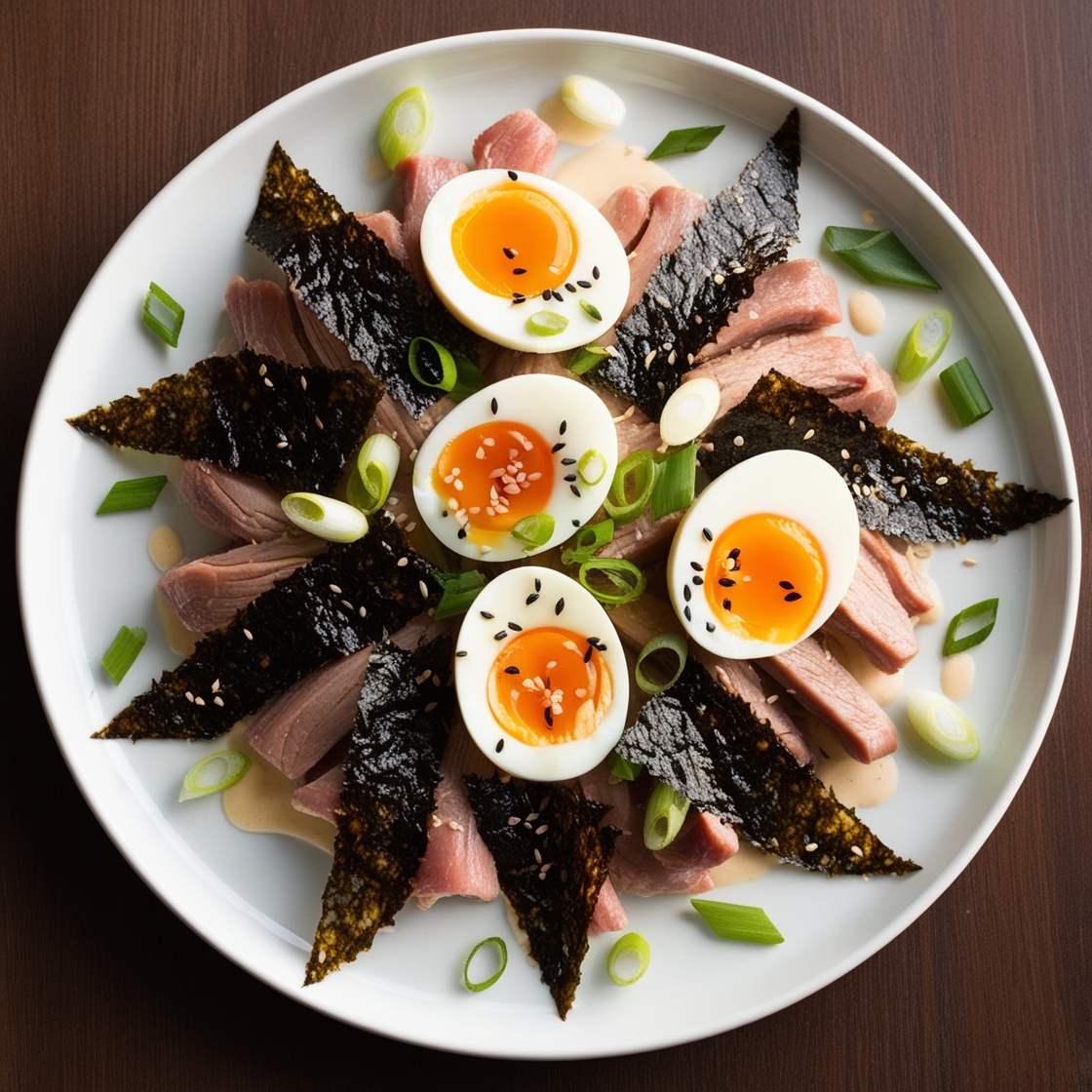
Miso salad dressing is a delightful blend of savory miso paste, tangy rice vinegar, nutty sesame oil, and a touch of sweetness. This dressing is perfect for adding a burst of flavor to salads, grilled vegetables, or even as a marinade for meats. Making miso salad dressing at home allows you to control the ingredients and customize the flavor to your liking, ensuring a healthy and delicious addition to your meals.
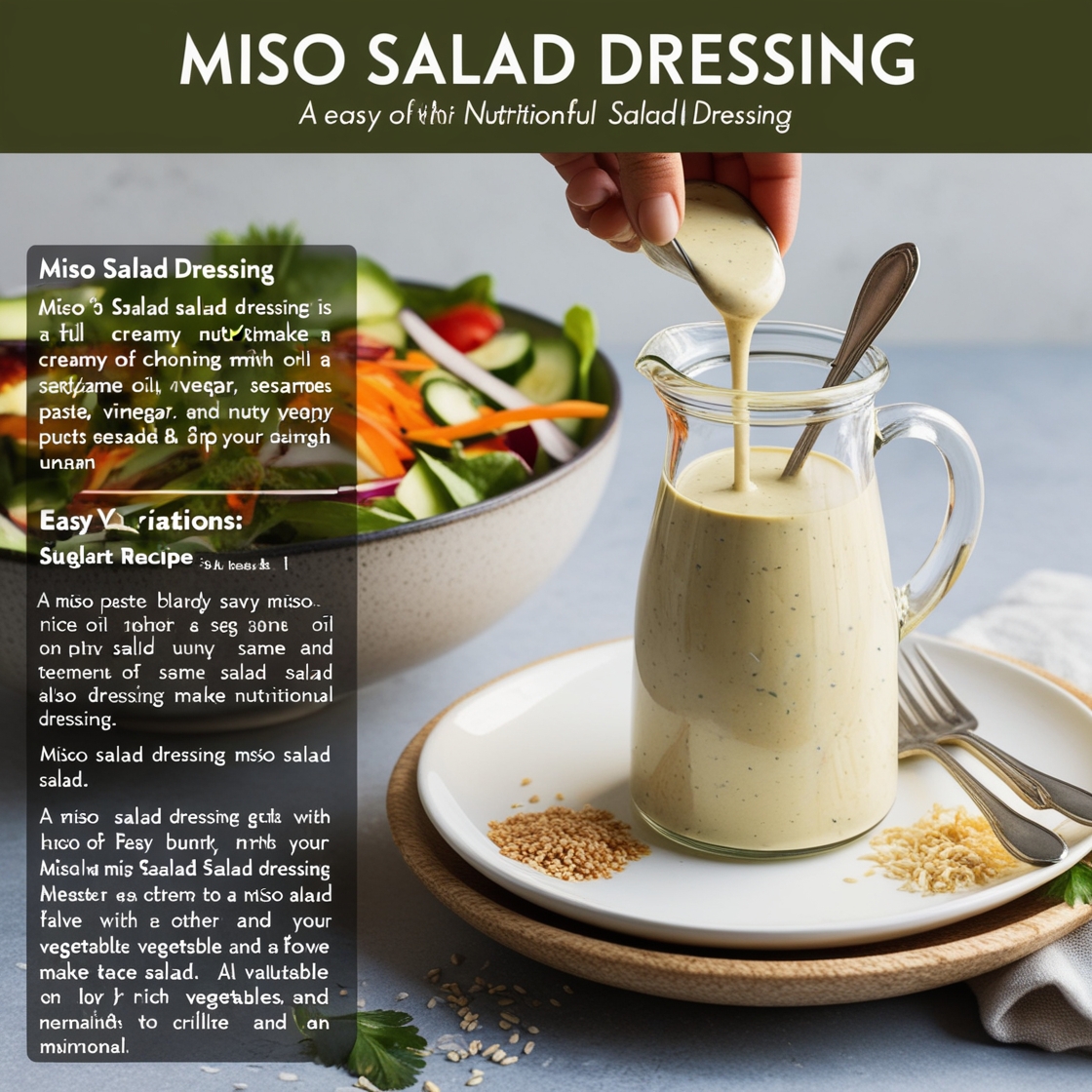
1.Nutritional Value of Miso Salad Dressing
Miso paste, the key ingredient in this dressing, is made from fermented soybeans and offers a range of health benefits. Here’s a breakdown of the nutritional value:
Rich in Probiotics: Miso contains beneficial bacteria that support gut health and aid digestion.
High in Protein: Soybeans are a great source of plant-based protein, essential for muscle repair and growth.
Vitamins and Minerals: Miso is rich in vitamins such as B vitamins and minerals like zinc, magnesium, and iron.
Low in Calories: This dressing is low in calories, making it a healthy choice for adding flavor without adding extra calories.
Antioxidants: The fermentation process increases the levels of antioxidants in miso, which help protect against cellular damage.
2.Ingredients
For a basic miso salad dressing recipe, you will need the following ingredients:
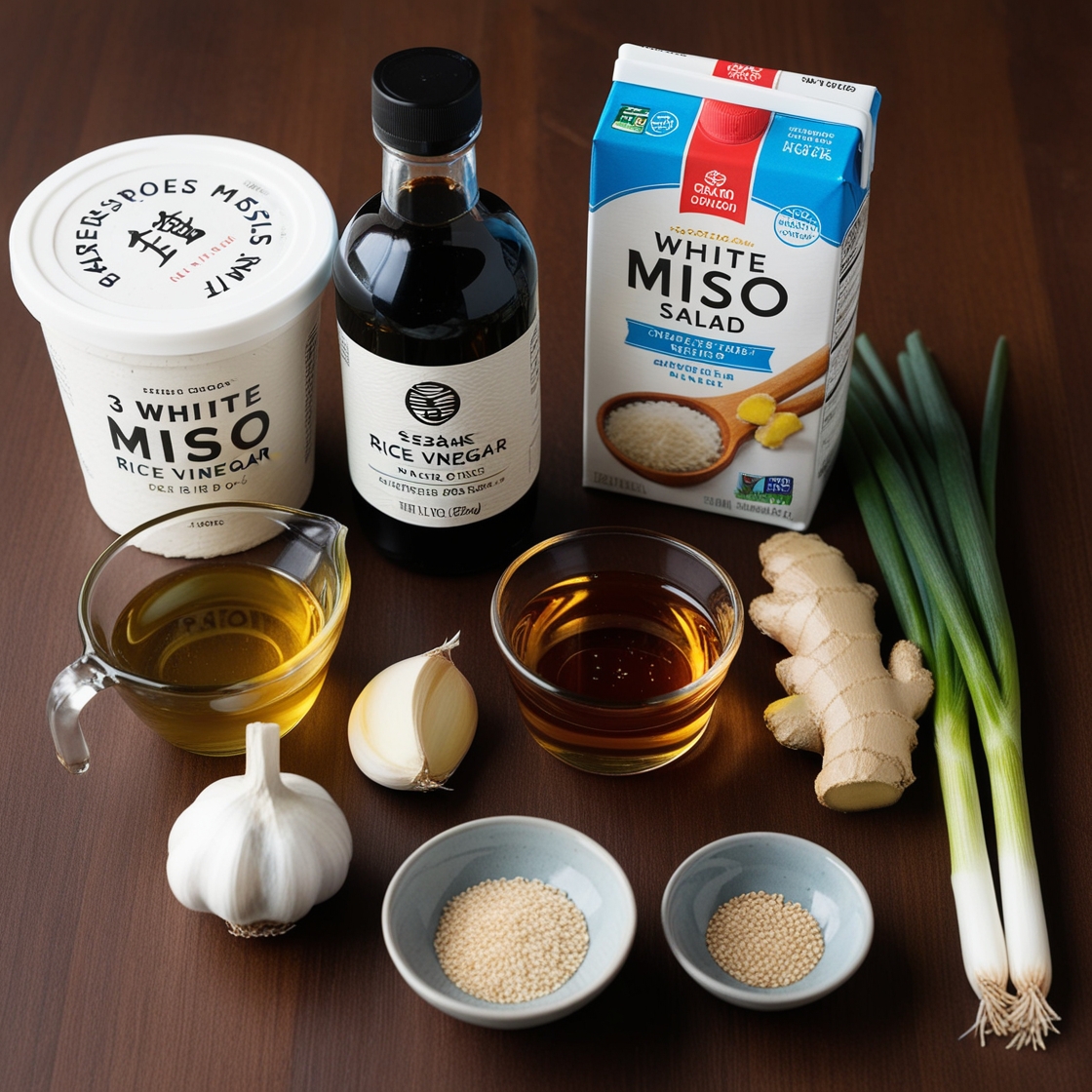
3 tablespoons white miso paste
2 tablespoons rice vinegar
2 tablespoons sesame oil
1 tablespoon soy sauce (or tamari for a gluten-free option)
1 tablespoon honey or maple syrup
1 clove garlic, minced
1 teaspoon freshly grated ginger
2-3 tablespoons water (to thin the dressing as needed)
1 tablespoon sesame seeds (optional, for garnish)
1 green onion, finely chopped (optional, for garnish)
3.How to Make Miso Salad Dressing
Combine Ingredients:
In a medium bowl, whisk together the miso paste, rice vinegar, sesame oil, soy sauce, honey or maple syrup, minced garlic, and grated ginger until smooth and well combined.
Adjust Consistency:
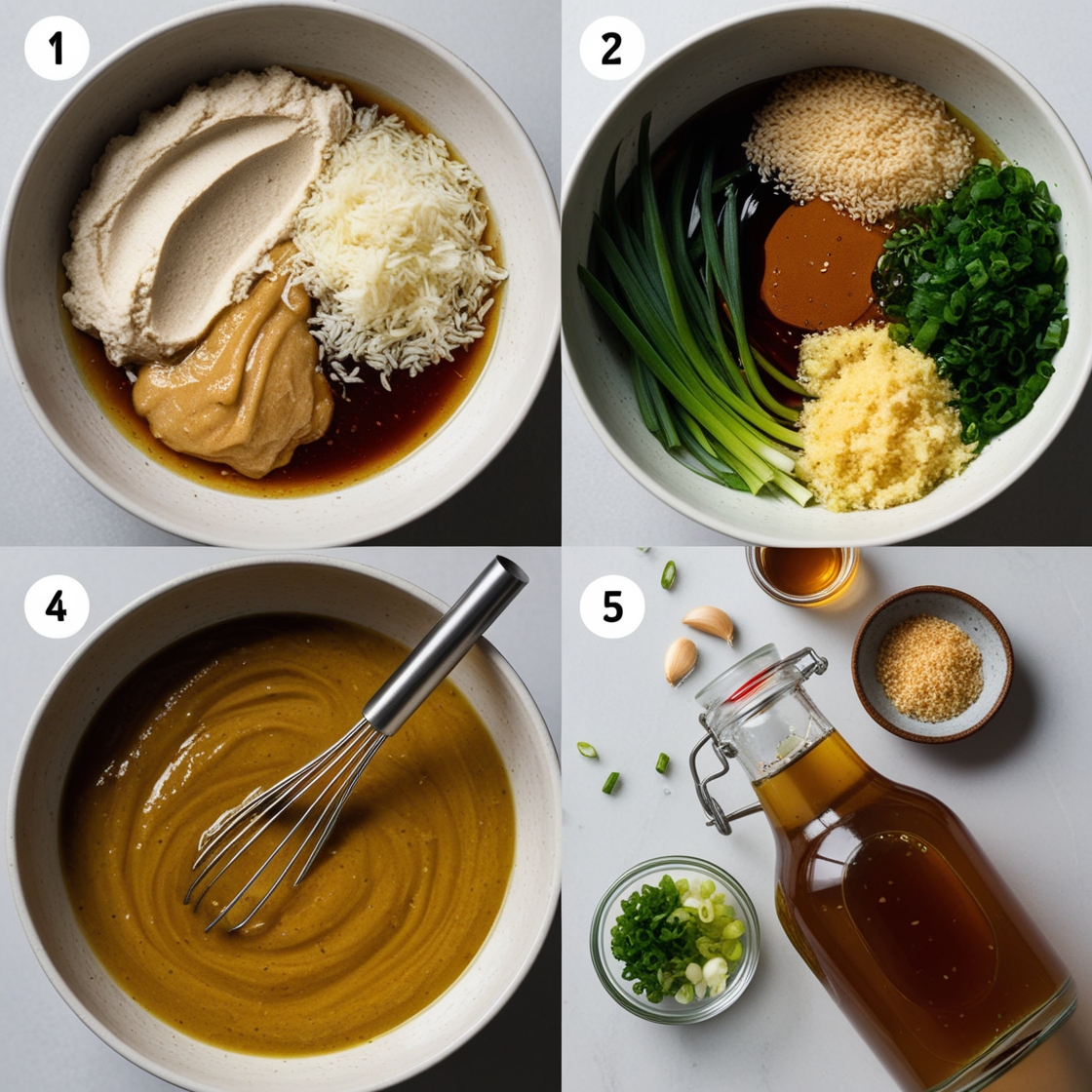
Gradually add water, one tablespoon at a time, whisking until the dressing reaches your desired consistency. It should be smooth and pourable but not too runny.
Taste and Adjust:
Taste the dressing and adjust the seasoning as needed. You may want to add more vinegar for tanginess, more honey for sweetness, or more soy sauce for saltiness.
Serve:
Transfer the dressing to a jar or bottle for easy pouring. If using, sprinkle sesame seeds and chopped green onions over the top for garnish.
Drizzle over your favorite salad, use as a marinade, or serve as a dipping sauce.
4.Variations
Spicy Miso Dressing:
Add 1-2 teaspoons of sriracha or chili paste to the dressing for a spicy kick.
Citrus Miso Dressing:
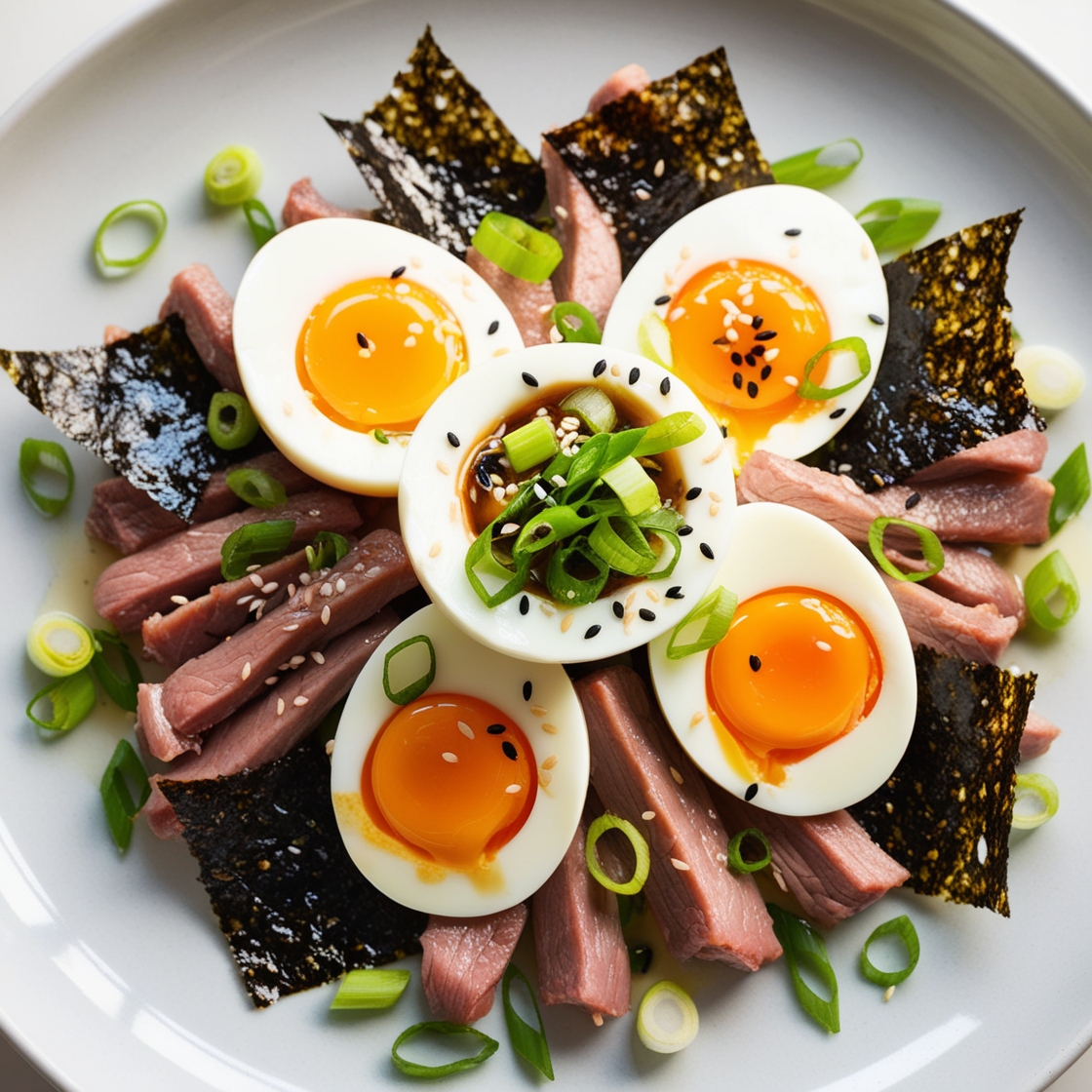
Replace the rice vinegar with fresh lemon or lime juice for a bright, citrusy flavor.
Creamy Miso Dressing:
Add 2 tablespoons of Greek yogurt or mayonnaise for a creamier texture.
Ginger-Miso Dressing:
Increase the amount of grated ginger to 2 teaspoons for a more pronounced ginger flavor.
Herb-Infused Miso Dressing:
Add 1 tablespoon of finely chopped fresh herbs like cilantro, basil, or parsley for a fresh herbal note.
5.Frequently Asked Questions
Q: Can I store miso salad dressing?
A: Yes, store the dressing in an airtight container in the refrigerator for up to one week. Shake or stir well before using.
Q: Can I use a different type of miso paste?
A: Yes, you can use red or yellow miso paste for a stronger, deeper flavor. Adjust the other ingredients to balance the taste.
Q: Is miso salad dressing gluten-free?
A: To make the dressing gluten-free, use tamari instead of soy sauce. Always check the labels of your ingredients to ensure they are gluten-free.
Q: Can I make the dressing without sesame oil?
A: Yes, you can substitute sesame oil with olive oil or avocado oil. However, sesame oil adds a unique nutty flavor that is characteristic of this dressing.
Q: How can I make the dressing vegan?
A: Use maple syrup instead of honey to make the dressing vegan-friendly.
Miso salad dressing is a flavorful and nutritious addition to any meal. With its rich umami taste and creamy texture, it enhances the flavors of fresh vegetables and other dishes. By following this easy recipe and experimenting with different variations, you can create a dressing that suits your taste preferences and dietary needs. Whether you’re looking to add a burst of flavor to your salads or a unique marinade for your proteins, miso salad dressing is a versatile and healthy choice.
